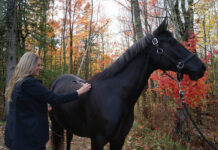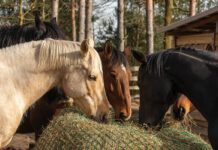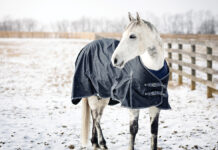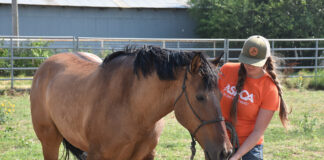Throughout the winter, horse owners in northern climates often face the unique challenge of keeping their companions well-nourished and comfortable in the elements. Proper winter feeding is crucial to helping horses maintain their body condition, avoid weight loss and stay healthy during the cold winter months.
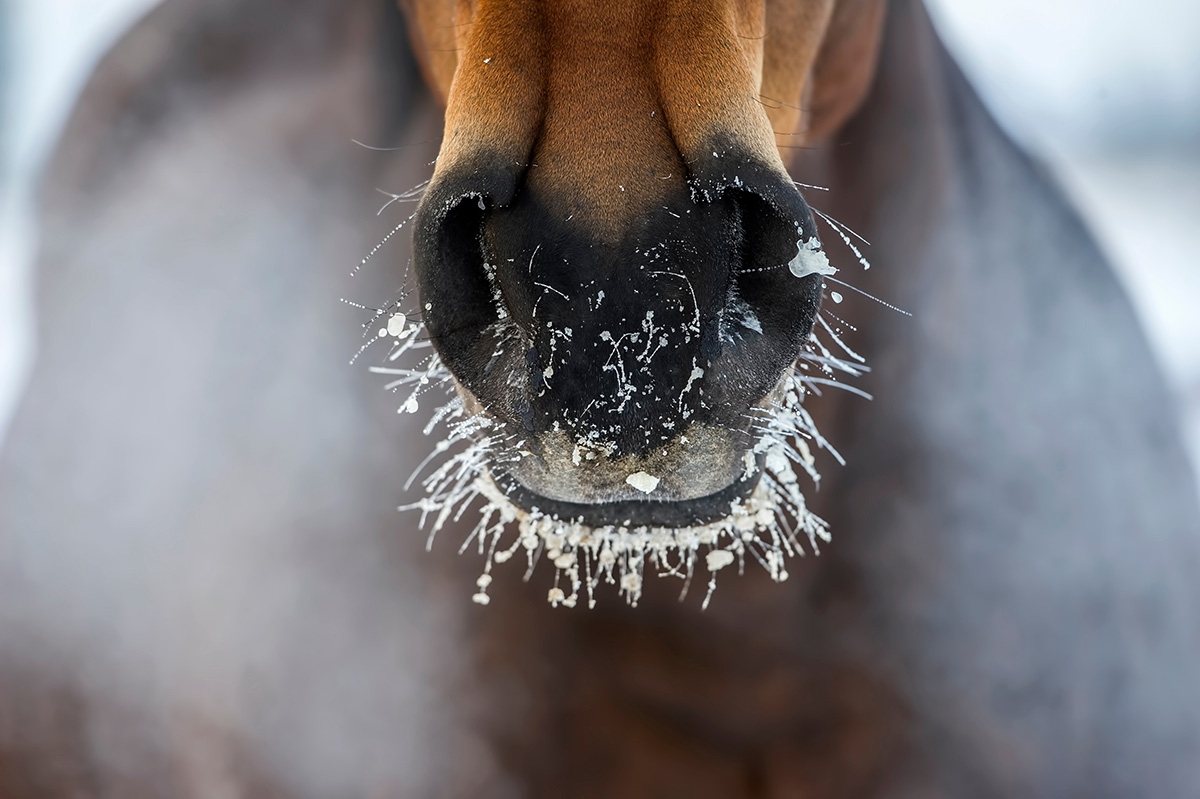
“There’s a high caloric demand on the horse’s body to stay warm,” says Dr. Abby Geick, an equine veterinarian with New England Equine Medical & Surgical Center in New Hampshire. “Sometimes their previous feeding regime just can’t keep up, and that’s when you start to see some ribs or muscle loss, or they blow their winter coats.”
One of Geick’s go-to solutions is Sentinel Extruded Horse Feed. She says it’s a great option for many horses because of the fat and fiber content, and the extruded nuggets can easily be soaked and made into a mash, if needed. Horses tend to like it, and it takes them longer to eat, which provides additional digestive benefits, she explains.
The Importance of Forage
The foundation of any horse’s diet should always be good-quality forage, which provides the necessary fiber to keep your horse’s digestive system working properly. A typical 1,000-pound horse usually consumes about 20 pounds of hay per day, but in colder weather that amount may rise to 25-30 pounds.
“Fiber digestion is key to keeping a horse warm,” says Dr. Randel Raub, Director of Research and Nutrition for Sentinel Horse Nutrition. “When horses digest fiber, they produce body heat.”
Bran Mash: A Warm Winter Treat
Bran mashes are a good option if you’re trying to increase water intake, especially during the winter. Another great way to increase water intake is to make a mash out of your horse’s regular meal. Sentinel’s extruded formulas can be very easily turned into a mash to ensure a horse gets adequate water without mineral imbalances.
Water and Salt Prevent Dehydration
As temperatures drop, water consumption can decrease, so it’s vital that horses always have access to fresh water that’s not too cold. Offering a trace mineral salt block or supplementing your horse’s feed can encourage water consumption, lowering the risk of health concerns like colic.
“Horses need to drink plenty of water to keep their digestive system running smoothly,” Raub notes. “You should check your horse’s water sources at least twice per day to ensure they’re not frozen, and using an insulated trough and tank heater is a great option to keep water accessible.”
Winter Riding Care
While proper nutrition is the cornerstone of winter horse care, paying attention to other factors, like exercise, shelter, ice and mud management, are also important.
If you ride or work your horse in winter, plan for more care time both before and after rides. Bits should be warmed before you put them in your horse’s mouth. Wait until it’s no longer cold to the touch before asking your horse to accept it.
Horses that sweat during winter rides need to be dried out completely. A thick winter coat can hold moisture for a long time, and drying can take a while. Horses can be dried by rubbing with a towel, feeding hay or keeping the horse under cover and applying a water-wicking cooler. Once the horse is dry, fluff up their hair before turning out, which will aid the insulating effectiveness of their coat.
Shelter Is Integral
Horses also need shelter from the elements. Trees and low places act as a natural wind barrier and can provide some protection from precipitation. A three-sided shelter provides the best protection from winter weather. It’s also important to ensure the shelter offers adequate space for your animals, allowing for their natural behavior and accommodating their hierarchy so that even the lowest horse in the pecking order has access to shelter.
“Mud is inevitable around feeders, waterers and gates, but with enough space, your horse can usually move to drier areas,” Raub says. “To manage this, I recommend using durable rocks that can handle heavy traffic and improve drainage. It’s a simple way to reduce mud and prevent erosion in high-use areas.”
Horses and other livestock can become mired in especially muddy areas. Check your horse’s legs regularly for mud or ice buildup and monitor hooves to ensure they’re free of ice that could cause slipping.
Many horse owners choose to blanket their horses during the winter months. A horse living outside that doesn’t grow a thick winter coat could benefit from this, especially during cold snaps. Also, horses that don’t have access to shelter will appreciate a proper turnout blanket during inclement weather.
Be sure to take your horse’s blankets off regularly during the colder months to monitor body condition. It’s important to physically assess how they’re maintaining their weight.
“Winter care is all about setting your horse up for success,” Geick says. “By adjusting their diet and care to match the season, you’re taking a great first step.”
If you’re unsure if your current feed is meeting your horse’s winter nutritional needs, ask your veterinarian if a Sentinel extruded formula could be right for them.
Further Reading:
◆ Winter Horse Care FAQs
◆ Feeding the Senior Horse in the Winter
This article about feeding horses in the winter is a web exclusive for Horse Illustrated magazine. Click here to subscribe!

